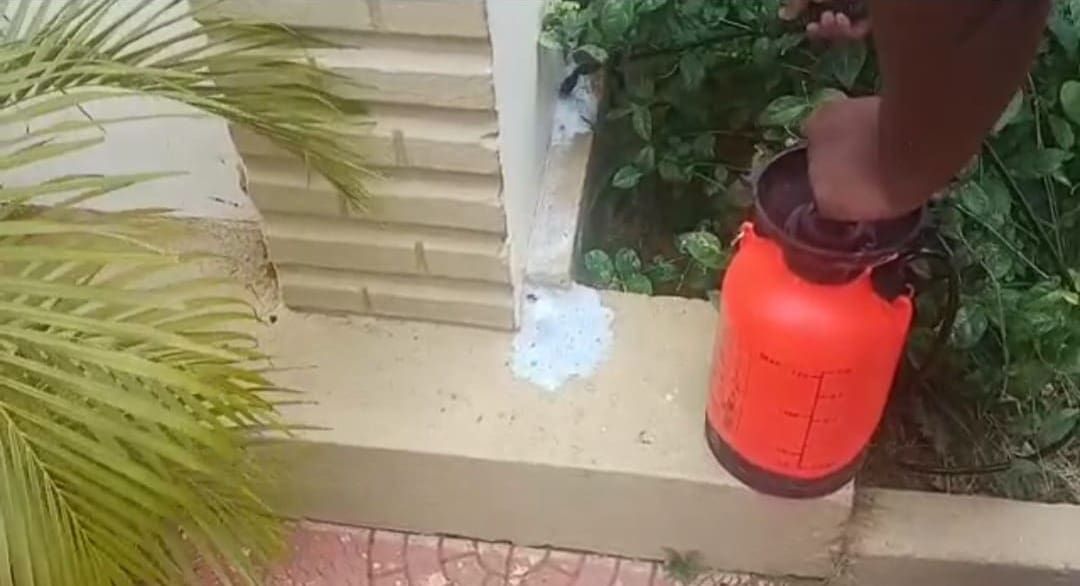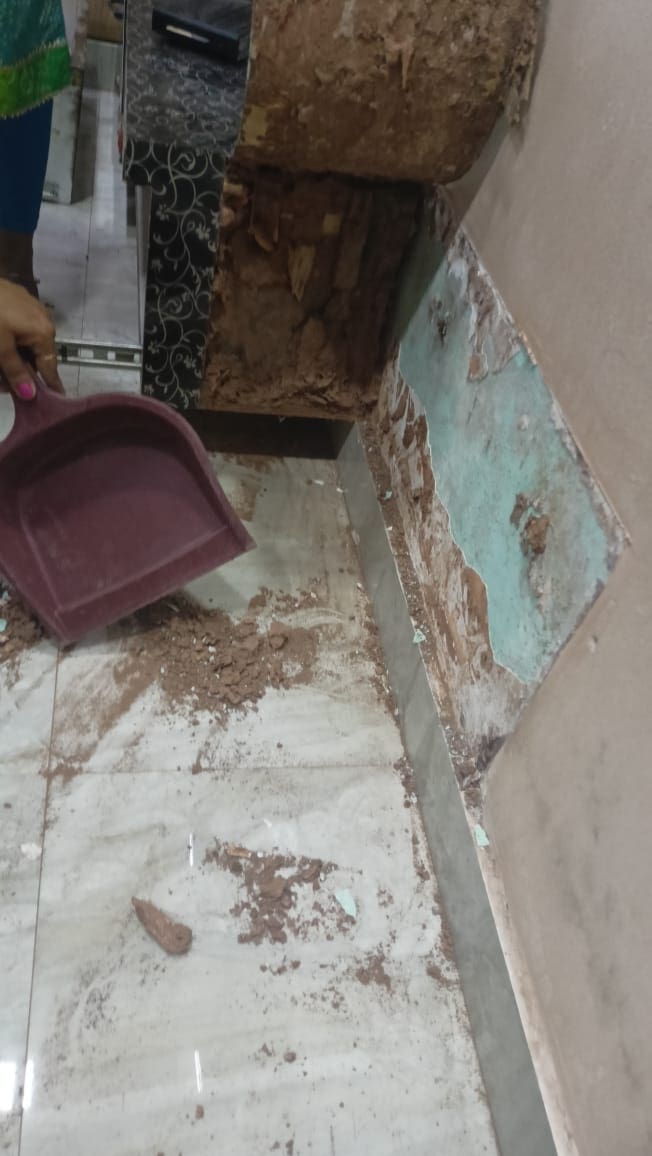Talk to Us
+91-7978603683

The utilisation of wood as a building material is significant. Termites are extremely common wherever there is wood, and if the infestation is allowed to continue uncontrolled, they can inflict a significant amount of damage to the building. Bhubaneswar is very prone to termite issues. Many owners have gone through a painful time due to severe damage to their homes from the Termite attack. Anti-termite treatment is a must for any building in Bhubaneswar. We recommend to do both Pre and Post Construction Anti-termite treatment in your building.
In order to rid yourself of the danger posed by termites, you need to hire a professional to spray different stages of the building with chemicals that kill termites. Keep in mind that the spraying should begin from the foundation and continue all the way up until the home is completely finished.
If you ignore the threat posed by termites, it could end up costing you a lot of money. Act quickly, and you can enjoy the benefits later. Below is a photo of the damage caused by Termite within a span of 1 year.



Prior to preparing your termite treatment plan, identify your termites.
Before choosing your preferred form of termite control treatment, it’s critical to understand the many types of termites that can harm your house. Subterranean and drywood termites both have the potential to harm wooden furniture. Termites that reside underground can exist in both soil and wood. Where they may establish their colonies, these organisms favour damp environments.
Subterranean termites typically thrive under houses and eat away at timber foundations. In contrast, drywood termites do not require damp conditions to survive, unlike their underground counterparts. They invade and reside inside dry wood such as walls, siding, eaves, and other structures, making at-home anti-termite treatment challenging.
Drywood termites have the potential to be significantly more detrimental to your property than subterranean termites. They reside indoors, on dry furniture, which is why this is the case. As a result, we’ll concentrate on the drywood termite management method.
Principles of Termite Proofing
The following general guidelines should be followed when creating a termite-proof building:
- The building should receive the proper termite-proofing treatment throughout the actual construction process.
- By placing an impermeable slab (concrete or stone) beneath the rainfall pipes, you may ensure that the site has appropriate site drainage.
- Create a concrete fence around the building.
- Filler for plinth and foundation gaps should be coated with termite-resistant chemicals.
- Use the right joint fillers or metal strips to make floor joints termite-proof.
- It is important to take the necessary precautions to prevent any gaps or bridges between the building and untreated soil.

Termite-Proofing Treatment Before or During Construction
When the pits are prepared, anti-termite treatment should begin to block subterranean termites from entering the buildings by establishing a chemical barrier in the soil surrounding the construction site. The following are the various anti-termite treatment phases:
Stage 1: Chemicals should be sprayed onto the termite hills that were discovered during site clearance.
Stage 2: Apply Durmet solution to the bottom and sides of trenches up to a height of 300 mm at a rate of 5 litres per square metre of surface area.
Stage 3: 300 mm of the refilled earth should be treated with anti-termite chemicals where it comes into touch with walls and columns. It is recommended to apply 3 to 5 gallons per linear metre of vertical surface.
Stage 4: Entails drilling 50 to 70 mm deep holes at a 150 mm grid pattern after the earth has been filled to the plinth level for the flooring. Apply the chemical solution to these holes at a rate of roughly 5 litres per square metre of surface area.
Stage 5: The wall-floor intersection needs to be treated with 15 litres per square metre of wall surface.
Stage 6: Holes 300 mm deep should be bored 150 mm apart throughout the building’s exterior perimeter when construction is complete. Chemicals should be injected into the holes at a rate of 5 litres per metre.
Stage 7: Anti-termite chemicals should also be applied to the perimeters of pipes and conduits as well as their expansion joints.
Stage 8: Two coatings of paint should be applied to any windows and doors that will be in touch with masonry before they are installed.
Post-Construction Termite-Proofing Treatment
Any building that has termite development must undergo post-construction treatment to be termite-proofed. The steps are explained below and pressure pumps are utilised to achieve proper chemical penetration.
Outside walls of the building: If there are flagging concrete exterior walls, then 300-mm-diameter holes with a diameter of 12 mm are drilled and filled with a chemical solution. If there isn’t flagging concrete, then chemical filling is placed in 500 mm deep holes that are drilled with iron rods at 150 mm intervals.
Soil under the floor: Holes 300 mm apart are drilled to treat the floor, walls, building seams, cracks, etc. To soak the soil, a chemical solution of around 1 litre is injected into these holes.
Treatment at plinth level: Holes are drilled at plinth level on both sides of the wall at a 45-degree angle and 300 millimetres from the centre. After being sealed with cement mortar in a 1:2 ratio, the chemical solution is pumped inside.
Concrete or metal sheets can be used to create structural barriers that will better guard against termites. Metal barriers are more prone to fail owing to corrosion or other damage, making concrete barriers more resilient. Concrete barriers can be 50 to 75 mm thick, and they can reach 50 to 75 mm past the plinth on either side.
Termites have the potential to seriously harm your building. Therefore, termite-proofing services are crucial for any building in order to prevent termite attacks, neutralise them, and save the structure’s wood interiors.
Anti-Termite Treatment in Bhubaneswar
We provide the best anti-termite treatment in Bhubaneswar, Cuttack and other cities in Odisha. We provide the best quality chemical during the treatment. With over 1 decade of experience, we know exactly what needs to be done to keep your property termite free. We provide 6 Years of Warranty of on Service. We will do a free visit in every 6 months for 10 times after the work is done. We will provide you with a certificate of the same once the treatment is done.
Stay relaxed and stay termite free. Call us today to discuss how we can help you.
For more information, call or WhatsApp us on 7978603683.
Visit us at www.kritikreations.in
Our interior design studio is located at
Pt No.-A/7 (2nd Floor), Mancheswar IE
Bhubaneswar, 751010

